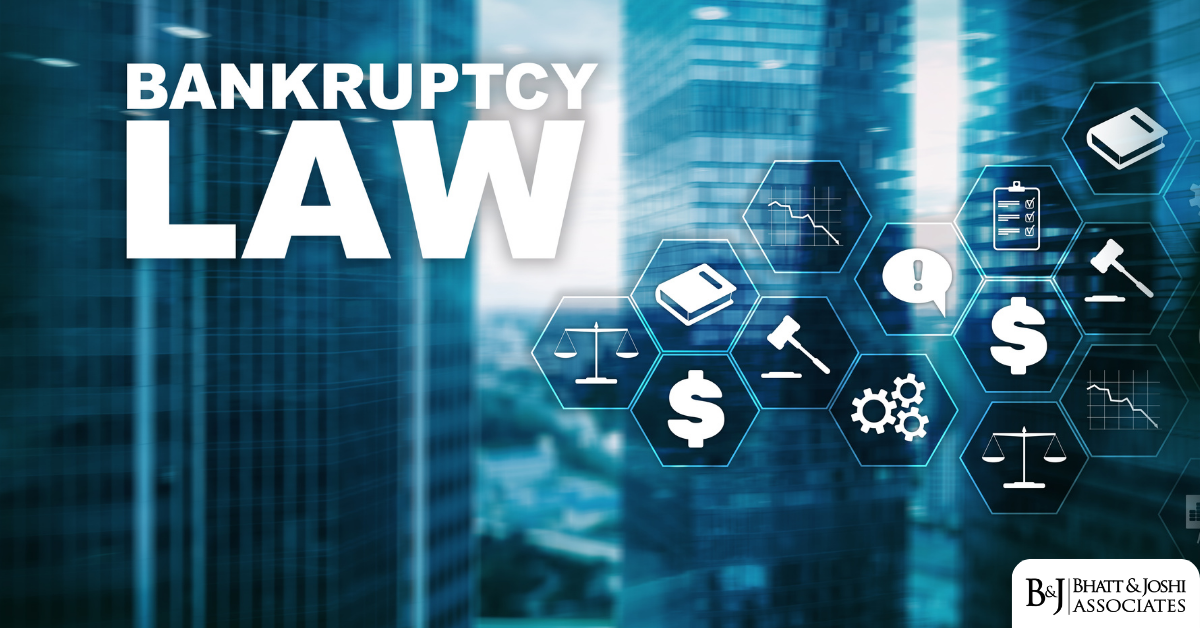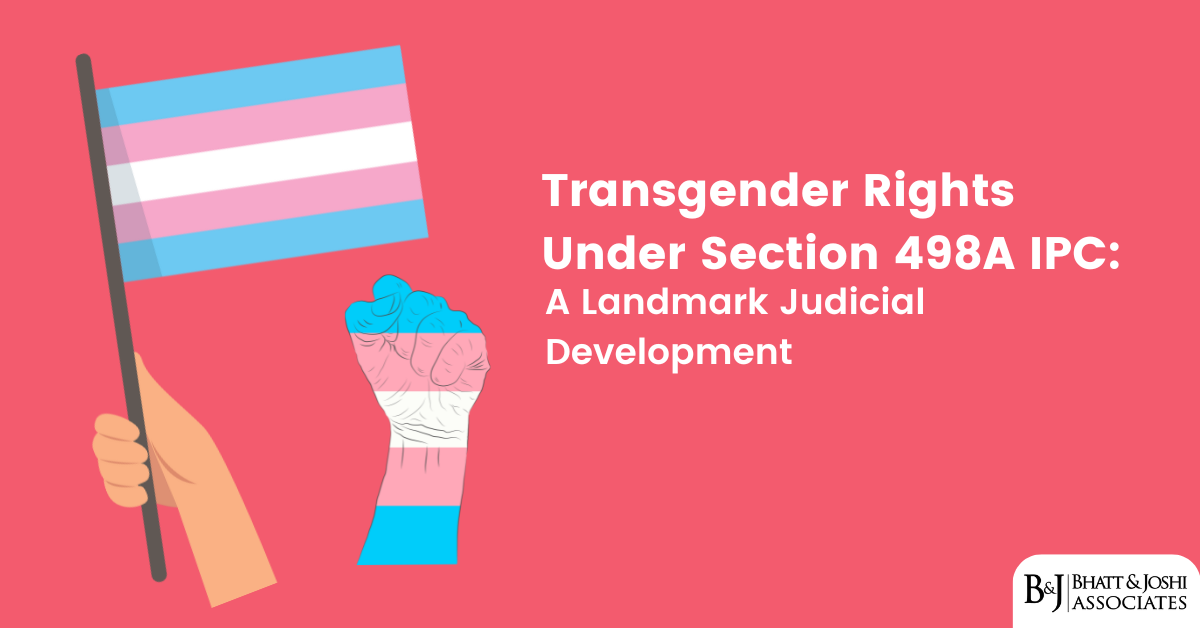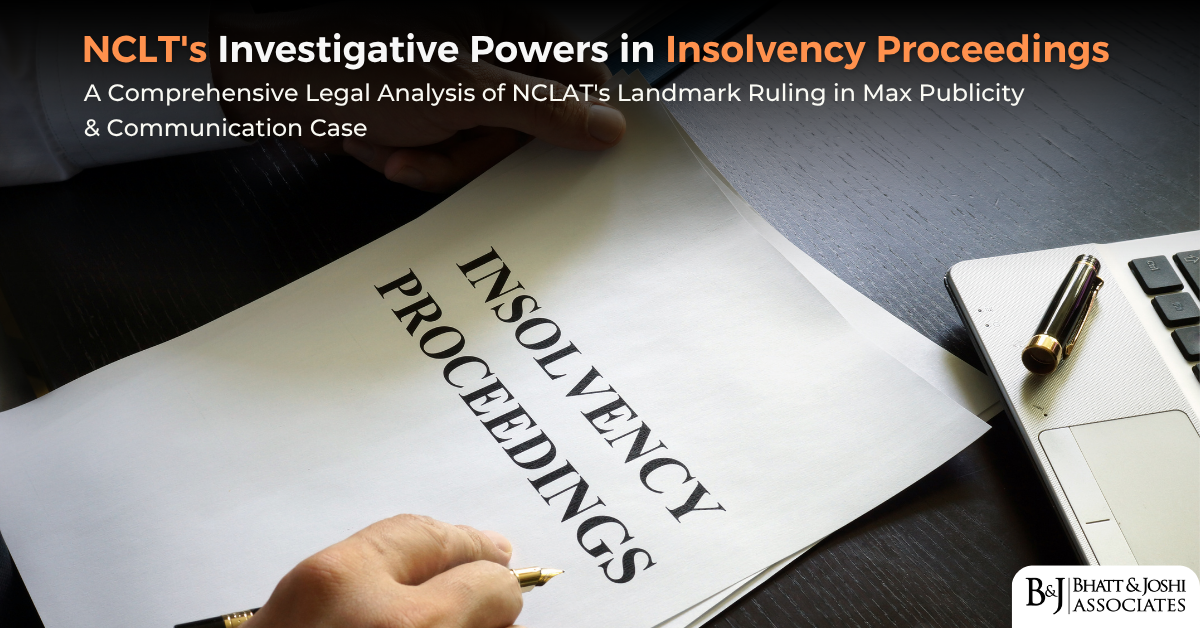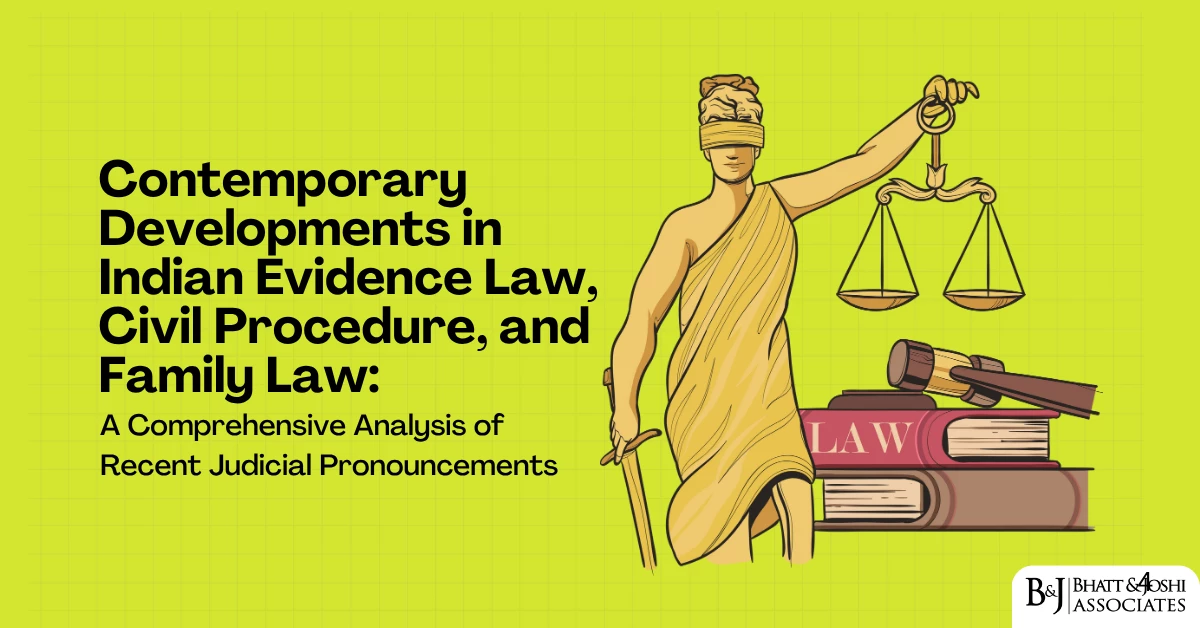
Legal Framework Governing Liquidation
Statutory Provisions
The liquidation process under the IBC is governed by Part II, Chapter III of the Code, specifically sections 33 to 54. Section 33 mandates liquidation when no resolution plan is submitted or when the resolution plan submitted is rejected by the Committee of Creditors (CoC) or the Adjudicating Authority. The process is further regulated by the Insolvency and Bankruptcy Board of India (Liquidation Process) Regulations, 2016 [3], which have been substantially amended through various notifications, most recently by the Amendment Regulations, 2024.
The overriding effect of the IBC is established through Section 238, which provides that the provisions of the Code shall prevail notwithstanding anything inconsistent contained in any other law. This non-obstante clause has been interpreted by courts to give the IBC supremacy over other statutes in matters of insolvency, as confirmed in Committee of Creditors of Essar Steel India Limited v. Satish Kumar Gupta [4].
Regulatory Framework
The Insolvency and Bankruptcy Board of India (IBBI) has issued comprehensive regulations governing the liquidation process. The IBBI (Liquidation Process) Regulations, 2016, as amended, provide detailed procedures for asset liquidation, stakeholder consultation, and distribution of proceeds. Recent amendments in 2024 [5] have enhanced transparency requirements and strengthened provisions relating to the Stakeholders Consultation Committee (SCC).
Scope of Liquidation Under the IBC
Powers and Duties of the Liquidator
Section 35 of the IBC [6] vests extensive powers and duties in the liquidator, making them the central figure in the liquidation process. The liquidator’s scope of work encompasses multiple critical functions that ensure orderly winding up of the corporate debtor’s affairs.
The liquidator Under the IBC is empowered to take into custody or control all assets, property, effects, and actionable claims of the corporate debtor. This includes conducting comprehensive asset verification as may be specified by the Board and preparing detailed reports thereon. The liquidator must also take necessary measures to preserve and protect the assets and properties of the corporate debtor, ensuring their optimal realization value.
Professional assistance forms a crucial component of the liquidator’s toolkit. Section 35(1)(i) authorizes the liquidator to obtain professional assistance from any person or appoint any professional in discharge of duties, obligations, and responsibilities. This provision enables liquidators to engage experts in various fields including valuation, legal matters, and technical assessments.
The liquidator possesses broad powers to carry on the business of the corporate debtor for its beneficial liquidation. This power, granted under Section 35(1)(j), allows for the continuation of operations where such continuation would enhance the overall realization value. The Supreme Court in Sundaresh Bhatt v. Central Board of Indirect Taxes and Customs [7] clarified that liquidators have commercial autonomy in making business decisions, subject to the framework of the Code.
Asset disposition constitutes a fundamental aspect of the liquidator’s role. Under Section 35(1)(f), the liquidator can sell the corporate debtor’s immovable and movable property as well as actionable claims through public auction or private contract. The provision, subject to Section 52, allows for flexible sale mechanisms including transfer to any person or body corporate, or sale in parcels as may be specified.
Legal proceedings management falls within the liquidator’s purview through Section 35(1)(k), which empowers them to institute or defend any suit, prosecution, or other legal proceedings, civil or criminal, in the name or on behalf of the corporate debtor. This ensures continuity in legal matters and protection of the corporate debtor’s interests during liquidation.
The liquidator is further authorized to execute necessary documentation and apply the common seal of the corporate debtor for liquidation purposes, distribution of assets, and discharge of obligations. Section 35(1)(l) provides comprehensive powers to sign, execute, and affirm any paper, deed, receipt, document, application, petition, affidavit, bond, or instrument necessary for the liquidation process.
Consultation and Reporting Mechanisms
The 2024 amendments have significantly enhanced the consultation requirements under the liquidation regulations. The liquidator must now consult the Stakeholders Consultation Committee (SCC) prior to initiating or continuing any legal proceedings, ensuring stakeholder participation in significant decisions affecting the liquidation estate.
Section 35(2) mandates that the liquidator may consult any stakeholders entitled to distribution under Section 53, though such consultations are not binding. The records of consultations must be made available to all other stakeholders in the manner specified by the Board, promoting transparency in the liquidation process.
Liquidation Process Under the IBC and Procedures
Initiation of Liquidation
Liquidation proceedings commence under various circumstances enumerated in Section 33 of the IBC. The primary trigger occurs when the resolution process fails due to non-submission of resolution plans, rejection by the CoC, or non-approval by the Adjudicating Authority. Additionally, liquidation may be initiated if the resolution plan is not implemented within the specified timeframe or upon application by the resolution professional citing specified grounds.
The liquidation commencement date marks the formal beginning of the process, from which all statutory timelines are calculated. Upon commencement, the corporate debtor ceases to carry on business except as required for beneficial winding up, though it continues to exist until formal dissolution under Section 54.
Asset Management and Realization
The liquidator’s primary responsibility involves creating a liquidation estate comprising all assets of the corporate debtor as per Section 36. This estate includes all property, assets, and rights of the corporate debtor available on the liquidation commencement date, as well as any property acquired during the liquidation process.
Asset realization strategies have evolved significantly with recent regulatory amendments. The 2024 amendments [8] enable reduction in reserve price by up to 25% and facilitate sale of assets through private sales, providing liquidators with enhanced flexibility in maximizing asset values. The amendments also enable distribution of funds prior to closure of the liquidation process in certain circumstances.
Distribution Mechanism – The Waterfall Framework
Section 53 of the IBC establishes the distribution waterfall [9], which represents the fundamental priority structure for disbursing liquidation proceeds. This mechanism begins with a non-obstante clause, ensuring its supremacy over any contrary provisions in other laws.
The waterfall prioritizes insolvency resolution process costs and liquidation costs at the apex, requiring full payment before any distribution to other stakeholders. The second tier encompasses workmen’s dues for twenty-four months preceding the liquidation commencement date and debts owed to secured creditors who have relinquished their security under Section 52, both ranking pari passu.
Employee welfare receives special attention through the third tier, covering wages and unpaid dues of employees other than workmen for twelve months preceding the liquidation commencement date. The fourth tier addresses financial debts owed to unsecured creditors, reflecting the Code’s emphasis on financial creditor rights.
Operational creditors occupy the fifth tier, followed by government dues and tax obligations in the sixth tier, covering amounts due to Central and State Governments for two years preceding liquidation commencement. The seventh tier includes remaining debts and dues not covered in preceding categories, while preference shareholders and equity shareholders occupy the final tiers respectively.
The Supreme Court in Committee of Creditors of Essar Steel India Limited v. Satish Kumar Gupta [10] emphasized that this waterfall mechanism represents a delicate balance established through thorough legislative deliberation and should not be disturbed without careful consideration of its impact on the insolvency resolution ecosystem.
Effects of Liquidation under the IBC
Legal Consequences
Liquidation under the IBC triggers several significant legal consequences that fundamentally alter the corporate debtor’s legal status and stakeholder rights. The most immediate effect is the cessation of business operations except as required for beneficial winding up, as mandated by Section 34(1). This provision ensures that the corporate debtor’s activities are directed solely toward maximizing realization value for stakeholders.
The moratorium provisions under Section 33(5) create a protective umbrella around the liquidation process, preventing any legal proceedings against the corporate debtor without permission from the Adjudicating Authority. This moratorium extends to all suits, legal proceedings, and enforcement actions, providing stability to the liquidation process.
Outstanding debts and obligations face systematic treatment through the waterfall mechanism. As established in various judicial pronouncements, liquidation extinguishes certain claims while creating statutory priorities for others. The Supreme Court’s recent clarification in Principal Commissioner of Customs v. Rajendra Prasad Tak [11] confirmed that all government dues, including customs and tax obligations, must be paid according to the Section 53 waterfall mechanism.
Impact on Contractual Relations
Liquidation Under the IBC significantly affects the corporate debtor’s contractual obligations and relationships. Lease agreements and hire purchase arrangements typically face termination upon liquidation commencement, relieving the estate from future payment obligations while potentially creating claims for outstanding amounts. The National Company Law Appellate Tribunal has consistently held that such terminations should be viewed in the context of maximizing estate value.
Employment relationships undergo systematic resolution through the liquidation process. The Code provides specific protection for workmen and employees through priority payments under the waterfall mechanism. The NCLAT in State Bank of India v. Moser Baer Karamchari Union [12] expanded the scope of workmen’s dues to include provident fund, pension fund, and gratuity obligations, though this interpretation has faced criticism for potentially disrupting the carefully balanced waterfall structure.
Stakeholder Rights and Remedies
Different stakeholder categories enjoy varying rights and remedies during liquidation proceedings. Secured creditors possess the option under Section 52 to either relinquish their security interest to the liquidation estate and participate in the waterfall distribution or enforce their security interests independently. This choice mechanism balances secured creditor autonomy with collective liquidation benefits.
Operational creditors, while lacking voting rights in the resolution process, retain rights to file claims and participate in asset distribution according to their waterfall priority. The recent amendments have strengthened consultation mechanisms, enabling operational creditors to participate in significant liquidation decisions through the Stakeholders Consultation Committee.
Unsecured financial creditors maintain priority over operational creditors in the distribution hierarchy, reflecting the Code’s recognition of their superior capabilities in techno-economic assessments and deeper understanding of debtor finances, as acknowledged by the Supreme Court in Swiss Ribbons Pvt. Ltd. v. Union of India [13].
Recovery and Enforcement Mechanisms
The liquidation process provides creditors with alternative recovery mechanisms compared to traditional debt enforcement. The time-bound nature of liquidation, typically completed within two years from commencement, offers faster resolution compared to prolonged civil litigation. The mandatory nature of liquidation timelines, as clarified in Palanivel v. Sriram [14], ensures expeditious completion while allowing for COVID-related exclusions in appropriate cases.
Asset realization through liquidation often yields better returns than individual enforcement actions due to economies of scale and professional management. The liquidator’s ability to sell assets as going concerns or in parcels provides flexibility to maximize value, as recognized in recent Supreme Court decisions regarding liquidator autonomy in commercial decisions.
Regulatory Oversight and Compliance
IBBI Supervision
The Insolvency and Bankruptcy Board of India maintains comprehensive oversight of liquidation proceedings through various regulatory mechanisms. Recent circulars dated February 22, 2024 [15], have enhanced transparency and stakeholder engagement requirements, mandating detailed reporting and consultation protocols.
The Board’s monitoring extends to liquidator performance through mandatory filing of periodic reports and compliance with prescribed timelines. The 2024 amendment regulations have introduced enhanced reporting requirements, including consultation records and stakeholder engagement documentation.
Judicial Oversight
The Adjudicating Authority exercises supervisory jurisdiction over liquidation proceedings while respecting the commercial autonomy of liquidators. The Supreme Court in ABG Shipyard cases [16] clarified that NCLT and NCLAT cannot function as supervisory authorities for overseeing the validity of liquidator approaches in asset sales, emphasizing the commercial nature of liquidation decisions.
Recent judicial trends indicate courts’ reluctance to interfere with liquidator decisions unless they violate statutory provisions or involve procedural irregularities. This approach maintains the balance between judicial oversight and commercial efficiency envisioned by the Code.
Recent Developments and Amendments
2024 Regulatory Amendments
The IBBI (Liquidation Process) (Amendment) Regulations, 2024, have introduced several significant changes to the liquidation framework. These amendments enable liquidators to pursue compromise and arrangement proposals only where the Committee of Creditors made such recommendations during CIRP, ensuring continuity between resolution and liquidation phases.
The amendments facilitate reduction in reserve prices by up to 25% and enable private sale mechanisms, providing liquidators with enhanced flexibility in asset realization strategies. Additionally, provisions for distribution of funds prior to closure of liquidation processes have been introduced to address practical challenges in fund management.
Enhanced consultation requirements mandate liquidator engagement with the Stakeholders Consultation Committee before initiating or continuing legal proceedings, promoting participatory decision-making in liquidation processes.
Judicial Developments
Recent Supreme Court decisions have clarified several aspects of liquidation law. The Court’s emphasis on commercial autonomy in BRS Ventures v. SREI Infrastructure [17] confirmed that while resolution plans extinguish claims against corporate guarantors, creditors retain rights to pursue principal borrowers independently.
The clarification in DBS Bank [18] regarding minimum payments to dissenting secured financial creditors has strengthened protections for secured creditors during liquidation, ensuring they receive liquidation value even when resolution plans are approved against their wishes.
Challenges and Emerging Issues
Practical Implementation Challenges
Despite comprehensive legal framework, liquidation processes face several practical challenges. Asset valuation complexities often lead to disputes among stakeholders, particularly where specialized or illiquid assets are involved. The 2024 amendments addressing reserve price reduction and private sales aim to address some of these valuation challenges.
Disputed claims continue to pose significant delays in liquidation proceedings. The verification process under Regulation 33 of the Liquidation Regulations requires careful balancing of stakeholder rights with process efficiency. Recent amendments have attempted to streamline claim verification while maintaining due process protections.
Coordination with various regulatory authorities presents ongoing challenges, particularly in cases involving environmental clearances, tax assessments, and sector-specific approvals. The overriding effect of Section 238 provides legal clarity, but practical implementation requires continued judicial interpretation and regulatory guidance.
Emerging Jurisprudential Issues
The scope of immunity under Section 32A remains an evolving area of law. Recent decisions suggest that immunity provisions may extend beyond successful resolution applicants to include asset purchasers in liquidation proceedings, though definitive clarification awaits further judicial pronouncement.
The treatment of personal guarantees in liquidation contexts has generated significant litigation. While the Code provides mechanisms for pursuing personal guarantors independently, the practical coordination between corporate liquidation and personal guarantee enforcement requires careful legal analysis.
Cross-border implications of liquidation proceedings are increasingly relevant as Indian companies with overseas assets and obligations undergo liquidation. The interaction between IBC provisions and international insolvency law principles presents complex challenges requiring specialized expertise.
Conclusion
The Liquidation Under the IBC framework, represents a significant advancement in India’s insolvency resolution ecosystem. The systematic approach embodied in the waterfall mechanism, combined with enhanced liquidator powers and stakeholder consultation requirements, provides a balanced framework for addressing corporate distress when resolution efforts fail.
Recent amendments and judicial developments continue to refine the liquidation process, addressing practical challenges while maintaining the fundamental balance between efficiency and stakeholder protection. The emphasis on commercial autonomy for liquidators, subject to statutory constraints and judicial oversight, reflects the Code’s market-oriented approach to insolvency resolution.
The overriding effect of the Code through Section 238 ensures supremacy of insolvency law principles over conflicting statutory provisions, providing clarity and predictability in complex multi-regulatory scenarios. However, continued vigilance is required to prevent erosion of the carefully balanced waterfall mechanism through ad hoc judicial or legislative interventions.
As the liquidation under the IBC framework matures, focus must remain on enhancing value realization for all stakeholders while maintaining the time-bound, efficient resolution mechanisms that distinguish the IBC from its predecessors. The success of liquidation proceedings ultimately depends on faithful implementation of statutory provisions, professional competence of insolvency professionals, and continued judicial support for the Code’s fundamental principles.
Category: Corporate Insolvency Resolution Process (CIRP), Liquidation
References
[1] The Insolvency and Bankruptcy Code, 2016 (31 of 2016). Available at: https://www.indiacode.nic.in/handle/123456789/2154
[2] Innoventive Industries Ltd. v. ICICI Bank and Anr., (2018) 1 SCC 407. Available at: https://main.sci.gov.in/
[3] Insolvency and Bankruptcy Board of India (Liquidation Process) Regulations, 2016. Available at: https://ibbi.gov.in/
[4] Committee of Creditors of Essar Steel India Limited v. Satish Kumar Gupta, (2020) 8 SCC 531. Available at: https://main.sci.gov.in/
[5] IBBI (Liquidation Process) (Amendment) Regulations, 2024 dated 12.02.2024. Available at: https://ibbi.gov.in/uploads/legalframwork/
[6] Section 35, Insolvency and Bankruptcy Code, 2016. Available at: https://ibclaw.in/section-35-powers-and-duties-of-liquidator/
[7] Sundaresh Bhatt, Liquidator of ABG Shipyard v. Central Board of Indirect Taxes and Customs, (2022) 10 SCC 1. Available at: https://main.sci.gov.in/
[8] IBBI (Liquidation Process) (Amendment) Regulations, 2024. Available at: https://www.mondaq.com/india/insolvencybankruptcy/1433914/
[9] Section 53, Insolvency and Bankruptcy Code, 2016. Available at: https://ca2013.com/section-53-distribution-assets/
[10] Committee of Creditors of Essar Steel India Limited v. Satish Kumar Gupta, (2020) 8 SCC 531. Available at: https://ibclaw.in/waterfall-mechanism-basic-structure-of-the-insolvency-and-bankruptcy-code-2016-by-harshit-gupta/
[11] Principal Commissioner of Customs v. Rajendra Prasad Tak & Ors., (2023) SCC Online SC. Available at: https://www.livelaw.in/top-stories/supreme-court-clarifies-cbic-dues-to-follow-section-53-of-ibc-waterfall-mechanism-241583
[12] State Bank of India v. Moser Baer Karamchari Union, Company Appeal (AT) (Insolvency) No. 346 of 2018. Available at: https://ibclaw.in/
[13] Swiss Ribbons Pvt. Ltd. v. Union of India, (2019) 4 SCC 17. Available at: https://main.sci.gov.in/
[14] Palanivel v. Sriram, (2024) SCC Online SC. Available at: https://taxguru.in/corporate-law/latest-case-law-related-ibc-july-september-2024.html
[15] IBBI Circular dated 22.02.2024 regarding Enhancing Transparency and Stakeholder Engagement in Liquidation Process. Available at: https://ibbi.gov.in/
Links to Download Full Judgement
- https://bhattandjoshiassociates.s3.ap-south-1.amazonaws.com/judgements/the_insolvency_and_bankruptcy_code,_2016 (1).pdf
- https://bhattandjoshiassociates.s3.ap-south-1.amazonaws.com/judgements/31 Aug 2017 in the matter of Innoventive Industries Ltd. Vs. ICICI Bank & Anr. Civil Appeal Nos.8337-8338 of 2017_2017-09-01 09_56_52.pdf
- https://bhattandjoshiassociates.s3.ap-south-1.amazonaws.com/judgements/Committee_Of_Creditors_Of_Essar_Steel_vs_Satish_Kumar_Gupta_on_15_November_2019.PDF
- https://bhattandjoshiassociates.s3.ap-south-1.amazonaws.com/judgements/2025-05-16-125046-g8oib-0ca26aec82f3088864221b568fb85415.pdf
- https://bhattandjoshiassociates.s3.ap-south-1.amazonaws.com/judgements/3e757794a8ff5f880b0ee07005ee4133.pdf
- https://bhattandjoshiassociates.s3.ap-south-1.amazonaws.com/judgements/Principal_Commissioner_Of_Customs_vs_Mr_Rajendra_Prasad_Tak_on_26_July_2023.PDF
- https://bhattandjoshiassociates.s3.ap-south-1.amazonaws.com/judgements/State_Bank_Of_India_vs_Moser_Baer_Karamchari_Union_Anr_on_19_August_2019.PDF
- https://bhattandjoshiassociates.s3.ap-south-1.amazonaws.com/judgements/Swiss_Ribbons_Pvt_Ltd_vs_Union_Of_India_on_25_January_2019 (1).PDF
- https://bhattandjoshiassociates.s3.ap-south-1.amazonaws.com/judgements/V_S_Palanivel_vs_P_Shriram_Cs_Liquidator_on_28_August_2024.PDF













